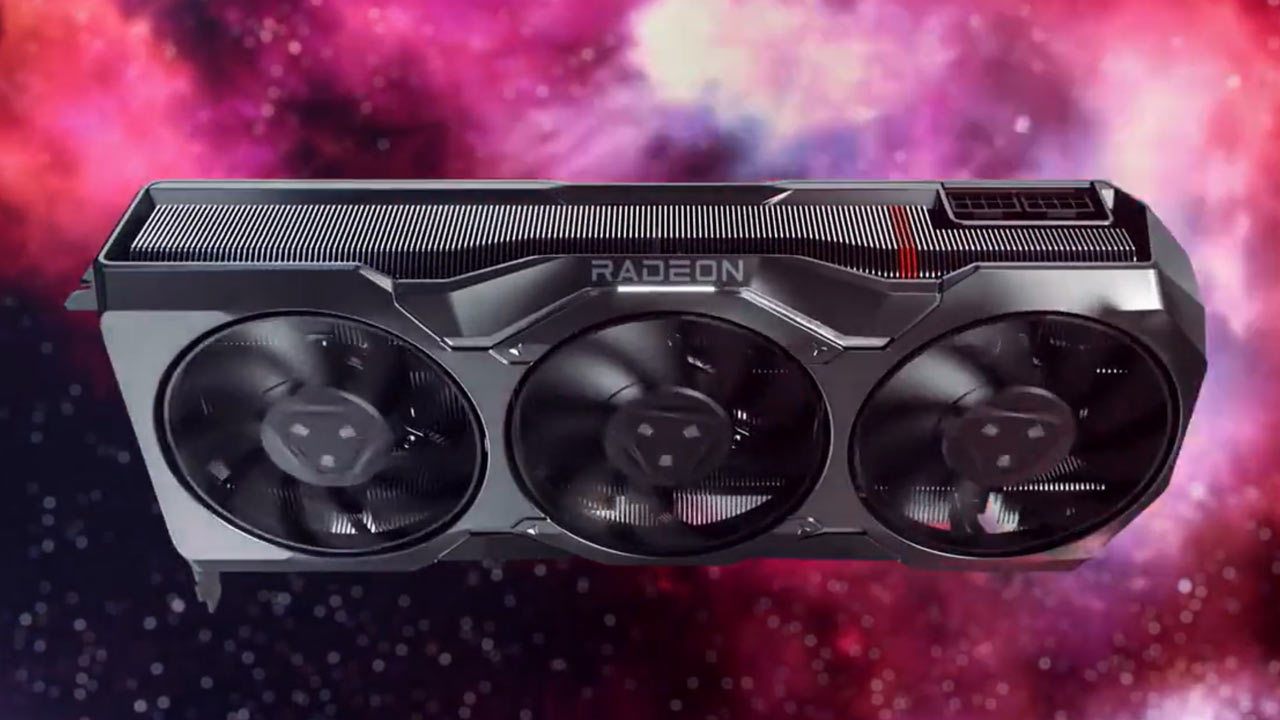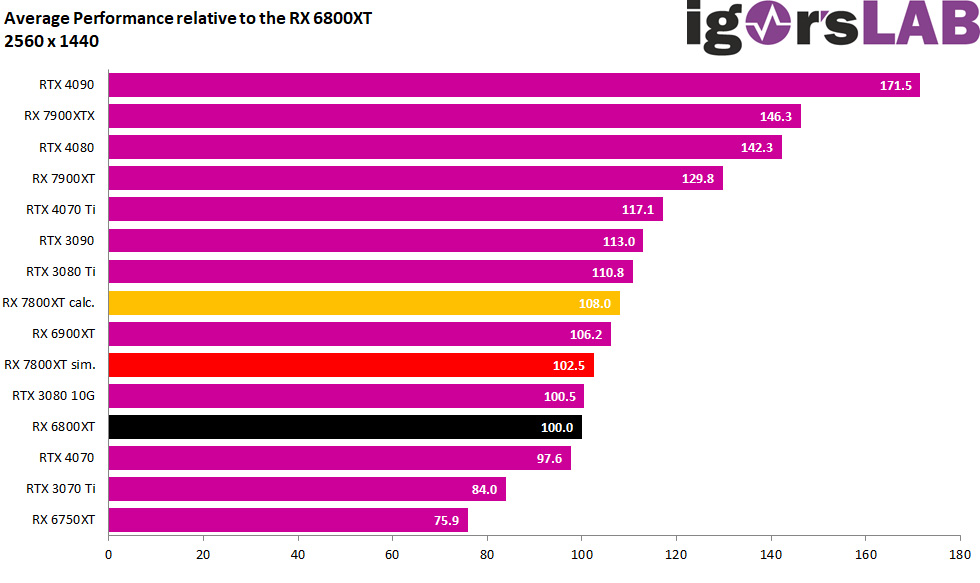
Igor's Lab has taken on the task of simulating an RX 7800 XT to see what performance might look like. This was done using AMD's new Radeon Pro W7800 graphics card, with half the memory otherwise occupied. Igor's simulation results and theoretical calculations put this theoretical 7800 XT roughly between an RX 6800 XT and RX 6900 XT, or between Nvidia's competing RTX 4070 and 4070 Ti.
The Radeon Pro W7800 is part of AMD's W7000 series workstation GPUs, featuring its latest RDNA 3 GPU architecture. The GPU sports 70 compute units using AMD's Navi 31 die, with 32GB of memory and a total board power rating of 260W. Due to this, the W7800 is arguably the best current candidate for simulating a theoretical RX 7800 XT. That's because it has a 256-bit memory interface, the same as the rumored RX 7800 XT; disabling half of the VRAM should be a reasonably close stand-in for the future GPU.
Igor provided two different test scenarios. The first involved physically simulating a 7800 XT by artificially disabling half of the memory, leaving the GPU with 16GB of GDDR6 VRAM. The second used theoretical calculations taken from the power efficiency results of the RX 7900 XT. The latter was done to attempt to provide a "more accurate" picture of how an actual RX 7800 XT may perform, since the W7800 is tuned for efficiency rather than performance.
It hopefully goes without saying, but both scenarios are at best an estimate of performance. There are multiple issues, including final clock speeds, core counts, whether the "disabled" VRAM truly mimics a 16GB card, drivers, and more. Igor tested at 1080p, 1440p, and 4K. The "simulated" and "calculated" W7800 results were relatively close, with the simulated results looking similar to an RX 6800 XT while the calculated results look more like an RX 6900 XT. Our GPU benchmarks hierarchy incidentally puts the 6900 XT about 7% ahead of the 6800 XT. Here's the overall 1440p chart:

Igor used nine games for his testing, two of which have ray tracing enabled (Cyberpunk 2077 and Metro Exodus Enhanced Edition). If the RX 7800 XT performs similarly to what he measured, you can see why AMD may not be rushing to bring the RX 7800 XT to market. It would be more efficient than the RDNA 2 GPUs, but performance wouldn't be much better. That would give very little reason for anyone to upgrade to the new RDNA 3 GPU, depending on pricing, since the RX 6800 XT currently starts at $519.
We do have to reiterate that Igor's predictions likely are not fully accurate. The RX 7800 XT's specifications remain confidential at this point, so we don't know what it will have in terms of compute units, shaders, cache, and GPU clocks. The W7800 also uses a trimmed down Navi 31 GCD with 70 CUs, while rumors indicate the RX 7800 XT will use a Navi 22 GCD with 60 (possibly 64) CUs. Depending on final clocks, the consumer card may or may not deliver better performance than Igor's simulated results.
Another problem is drivers, as workstation drivers tend to be less optimized for gaming and more optimized for professional applications. It's possible that drivers tuned for gaming could improve performance quite a bit.
Finally and perhaps most importantly, we also don't know what the price of the presumed RX 7800 XT will be. Given the rumored specs, $600 is probably the most AMD could ask, and it could potentially sell for less. Even if it only matches the performance of the existing RX 6800 XT, if it has a similar price and uses less power while providing a few new extras (like AV1 encoding support), it could still be a decent card.
There's little reason to expect a massive generational uplift in performance, unfortunately. The RX 7600 barely beats the previous generation RX 6650 XT, with both cards using 32 CUs with 8GB of 18 Gbps GDDR6 memory. The RX 7900 XT does beat the RX 6950 XT by around 17% in our testing, but it also features 84 CUs with 20GB of memory compared to 80 CUs and 16GB of memory. Trim the CU count down to 60–64, and performance would logically drop by about 25%.
We hope to see RX 7800 XT and RX 7700 XT hardware ship in the next month or two. Performance may not be significantly higher than the existing parts, but efficiency should be better and the additional architectural changes make them (slightly) more competitive with Nvidia's RTX 40-series. We'll be sure to test the new GPUs whenever they actually ship.







